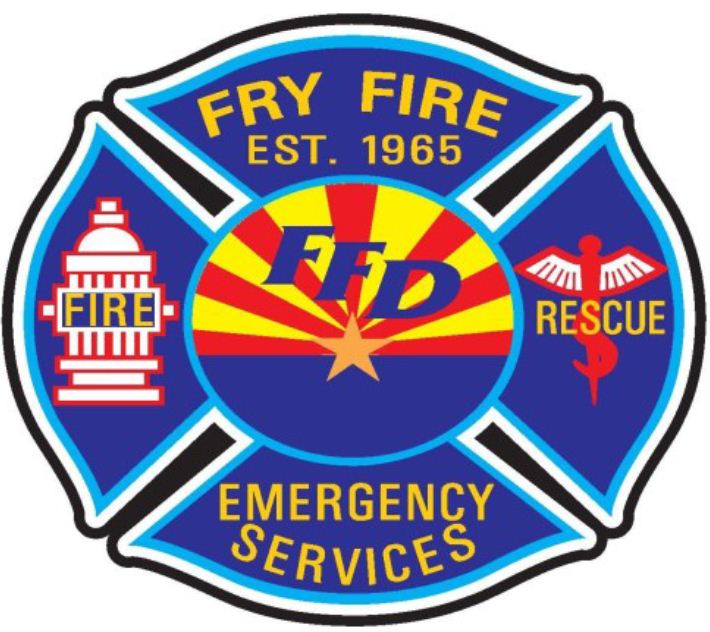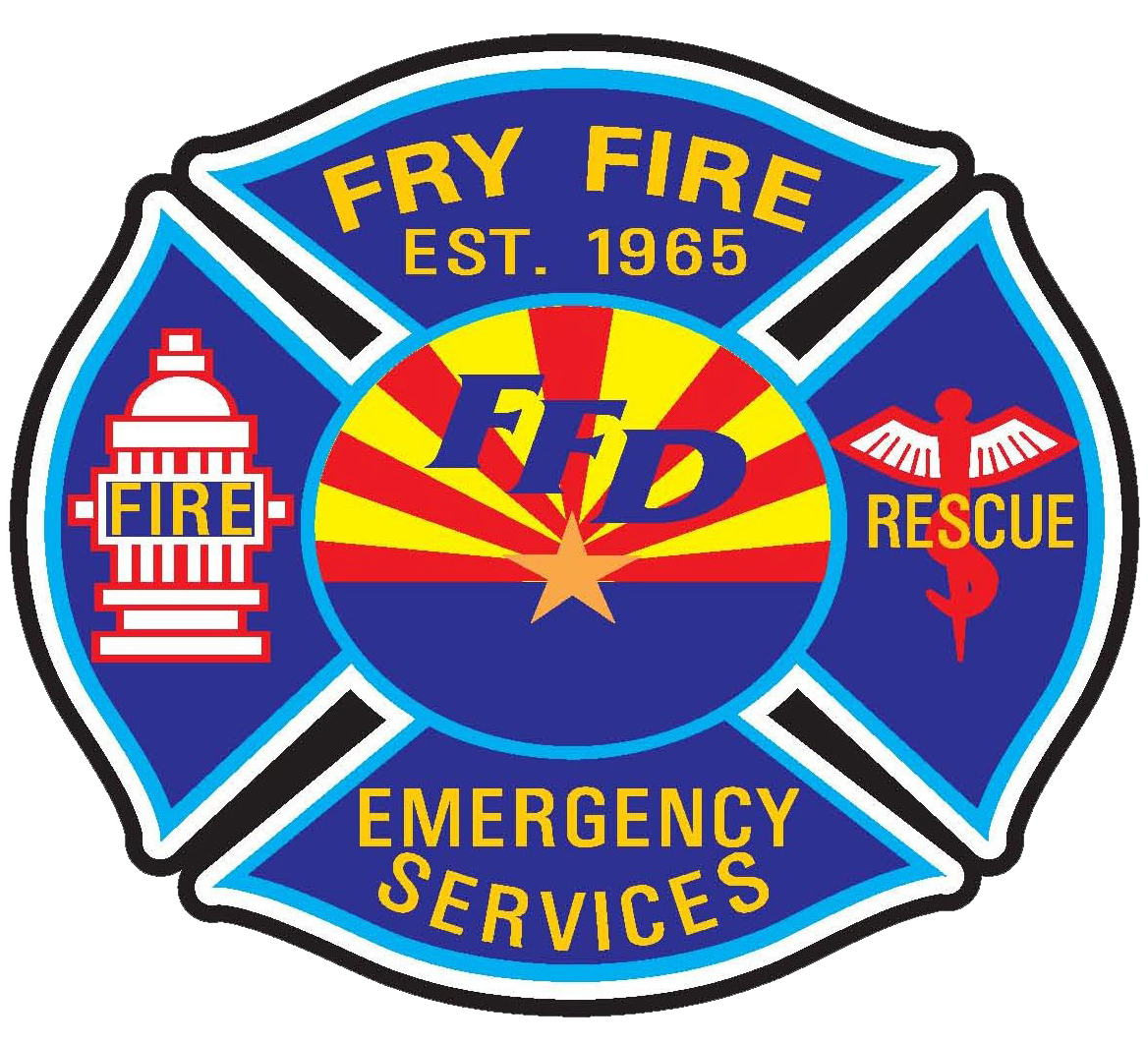
The Fry Fire District offers free child passenger seats and seat checks to the general public. All checks are done by appointment only. To request an appointment please call us at 520-378-2665 or send an email to jleffelman@fryfiredistrict.com.
A certified Child Passenger Safety Seat Technician will then call you within 5 business days. An appointment is not guaranteed within the 5 days, but you will be called to schedule the appointment within that time frame. This is free service that is provided by the Fry Fire District.
If you have any questions or issues please call us.
Seats are provided through grant funding from The Arizona Governor's Office of Highway Safety.
Additional Child Car Seat Information:
Child Passenger Safety Information: National statistics have shown that four out of five car seats are installed incorrectly - this increases the likelihood that a child passenger will sustain an injury or death in the event of a motor vehicle crash. We have Safe Kids World Wide Certified Technicians on hand to assist and educate our customers with child passenger safety questions. We are your expert resource on child passenger safety and injury prevention issues facing our children today.
Best Practice Recommendations:
As defined in the National Child Passenger Safety Certification Program 2007, “Best practice is the gold standard of protection. It is the most acceptable way to transport a child safely on the basis of the child’s age, weight, height, and body development.”
General Recommendations
- Keep your child in an age and size appropriate car seat as long as the child fits the manufacturer's weight and height requirements
- Keep children in the back seat until they reach age 13.
- Always refer to your specific car seat and vehicle manuals about how to use and install your car seat.
- Use the top tether of your forward-facing car seat. It will limit how far forward your child moves during a crash.
Age-specific recommendations
- Birth-12 months*: Always use a rear-facing car seat.
- 1-3 years*: Keep your child rear-facing until he or she reaches the top weight or height allowed by the car seat manufacturer (the AAP recommends rear-facing until a child is 2 years old or until they reach the top weight or height allowed by the car seat manufacturer).
- 4-7 years*: Keep your child in a forward-facing car seat with a harness until he or she reaches the highest weight or height allowed by the car seat manufacturer. When your child outgrows the car seat, he or she can be moved to a booster seat.
- 8-12 years*: Keep your child in a booster seat until he or she fits properly in a vehicle seat belt. To fit properly, the lap portion of the seat belt should lie snuggly across the upper thighs and the shoulder belt should fit snuggly across the middle of the shoulder and the chest (according to the AAP, a child is typically 4'9" tall and between 8 and 12 years old before a seat belt fits properly).
AAP's policy statement on child passenger safety, click on http://pediatrics.aappublications.org/content/127/4/788.full.pdf
AAP's technical report on child passenger safety, click on http://pediatrics.aappublications.org/content/127/4/e1050.full.pdf
NHTSA's recommendations, click on http://www.safercar.gov/parents/RightSeat.htm
*please note these are guidelines. Not every child will match these exactly.
Child Passenger Seat Types
Infant Seats (Birth to 20 Pounds - birth to age one)
Infants should be in a reclined infant car seat or convertible seat in the infant position to protect the delicate neck and head. All straps should be pulled snugly. The car seat must face the rear of the car and should never be used in a front seat where there is an air bag. The infant must face the rear so that in the event of a crash, swerve, or sudden stop, the infant's back and shoulders can better absorb the impact. Household infant carriers and cloth carriers are not designed to protect an infant in a car and should never be used.
Please never place any toys or mirrors around or near the child's face. During a crash these objects become flying projectiles and will injure your child.
Convertible Seats (5 to 40 Pounds)
The convertible car seat is placed in a reclined rear-facing position until an infant is 1 year and 20 pounds. After children reach at least 1 year and 20 pounds, the convertible seat can be turned forward and placed in the upright position in the back seat of the vehicle.
Fasten the convertible car seat with a vehicle seat belt, properly inserting the belt through the car seat frame according to the manufacturer's instructions. Read the vehicle owner's manual for specific instructions. A locking clip is needed when using a vehicle lap/shoulder belt with a latch plate that moves freely along the belt.
Booster Seats (40 to 80 Pounds)
When a child outgrows the convertible car seat or weighs about 40 pounds, either a belt positioning (backless) or high-back booster seat can be used with a lap/shoulder belt in the back seat of the vehicle.
The Car Seat Program currently only stocks Convertibles and 3-in-1 car seats.
Arizona State Child Occupant Protection Law
Arizona's law requires children under 8 and who are less than 4'9" in height or less must be secured in a child passenger restraint system.
- Children ages 15 and under must be restrained in some manner regardless of seating position.
- When Arizona does mandate child restraint use, it requires the driver to secure both the child safety seat and the child properly.
Other Provisions:
- Seat belts are required for all occupants in front seating positions.
- Arizona's law allows a driver to transport children without restraints if all other seating positions in the vehicle are occupied by other restrained passengers.
Penalty:
- The safety belt law is secondarily enforced.
- Drivers are fined $50 for child restraint violation.
- The driver is fined a maximum of $10 for safety belt violation by occupants under 16.
- Drivers are not assessed points on their licenses when failing to comply with the child restraint law.
- The offender is fined a maximum of $10 for safety belt violation if 16 and older.

